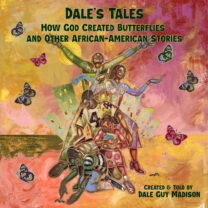
Through the study of history and literature, students discover the world, with all of its beauty and all of its pain. Shakespeare is great, but his material is often incredibly bloody. The same goes for the history of the 20th century. As parents and educators, we are responsible for teaching students difficult content. How do we do so appropriately, especially for our more sensitive students?
This is where homeschooling shines. You know your student better than anyone. Therefore, you can help customize your child’s learning experience to match their maturity level. Here are a few helpful tips:
1. Use a Trustworthy Curriculum as a Guide
If you are overwhelmed with the prospect of deciding what is and is not appropriate for your child, find a trustworthy curriculum that does most of that work for you. For example, The Story of the World, our history curriculum, teaches accurate history that is still age-appropriate for grammar stage students.
Cathy Duffy is a great resource for high-quality curricula reviews. If you have specific questions about a certain curricula, you can ask homeschool veterans on The Well-Trained Mind forums or another online support group. They’ve had to teach hard topics before and can provide great advice.
Once you have a curriculum you trust, you know that the general swath of the story will work for you. Then it becomes a matter of previewing chapters and tweaking things for your particularly sensitive students. With just a few simple edits, you can turn a great curriculum into a perfect curriculum for your child. This is much less overwhelming than starting from scratch!
2. Give Yourself Permission to Tweak Your Curriculum
Give yourself the permission to make the changes you need. You may have a student that seems hyper-sensitive, even to content designed for his or her age group! Susan Wise Bauer recommends skipping, editing, and postponing material whenever necessary with sensitive children. Take a deep breath. It’s okay.
Particularly for grammar stage students, they will have time to revisit or dive deeper into hard topics when they are ready at a later date. It’s better to encourage compassion than to desensitize a student just to meet an arbitrary goal of covering the “right” material.
3. Find Online Recommendations for Specific Topics
If you are about to cover a difficult historical event or a book with mature themes, don’t be afraid to look for help! You probably aren’t the only one worried about teaching that topic appropriately. So there are bound to be some resources available online!
For example, look up “teaching Holocaust for middle schoolers” and you will find lesson plans sorted by grade level from Yad Vashem, a curated book list from the School Library Journal, teaching tips from the US Holocaust Memorial Museum, and more.
Of course, make sure you are using resources from trusted organizations. Here are a few websites with free high-quality resources: Stanford History Education Group, Teaching for Justice, and Facing History. Before using any resource, it is a good idea to Google the author or organization to check for credibility. Bonus points if you ask your burgeoning middle school and high school historians to help you with that process!
4. Include Lots of Time for Discussion
As students move into the logic and rhetoric stage, covering difficult topics and mature literature becomes inevitable. When that happens, make sure to leave room for discussing things with your child.
It is a great practice to read great books alongside your students, so that you are prepared if they want to discuss something. If you don’t have time to read the whole book, try listening to an audio version or reviewing a summary.
Your sensitive students will require more time for discussion with you, not less. It is okay, even beneficial, to slow down your pacing to make room for impactful topics. Use the opportunity to discuss people’s actions and what they might have done differently. Remind your student that it is okay for them to feel sad, angry, or confused. By talking things through, you can help your child process disturbing information in a productive way.
Conclusion
There are many resources to support you as you share the hard side of the humanities with your student. At the end of the day, you know your child the best. While covering difficult topics is inevitable at some point, there is no harm in temporarily delaying this instruction or teaching it slowly with ample time for discussion.
Recommended Products
-
Sale!

The Well-Trained Mind: Essential Edition
0 out of 5$39.99$34.95 Add to cart -
Sale!

Ozma of Oz
0 out of 5$19.46 – $25.46 Select options -
Sale!

The Marvelous Land of Oz
0 out of 5$19.46 – $25.46 Select options -
Sale!

Dale’s Tales
5.00 out of 5$8.95$6.71 Add to cart -
Sale!

Writing With Ease 2, Revised Student Pages
0 out of 5$15.95 – $16.11 Select options -
Sale!

Writing With Ease 2, Complete Revised Edition
0 out of 5$31.95 – $33.11 Select options -
Sale!

Once Upon a Fairytale
0 out of 5$9.71 – $12.71 Select options -
Sale!

Napoleon and the French Revolution
0 out of 5$11.01 – $14.41 Select options
ABOUT THE AUTHOR
Susanna Jarrett
Join over 100,000 homeschooling families
For the latest offers, educational insights, products and more.
By joining you agree to our privacy policy.
















